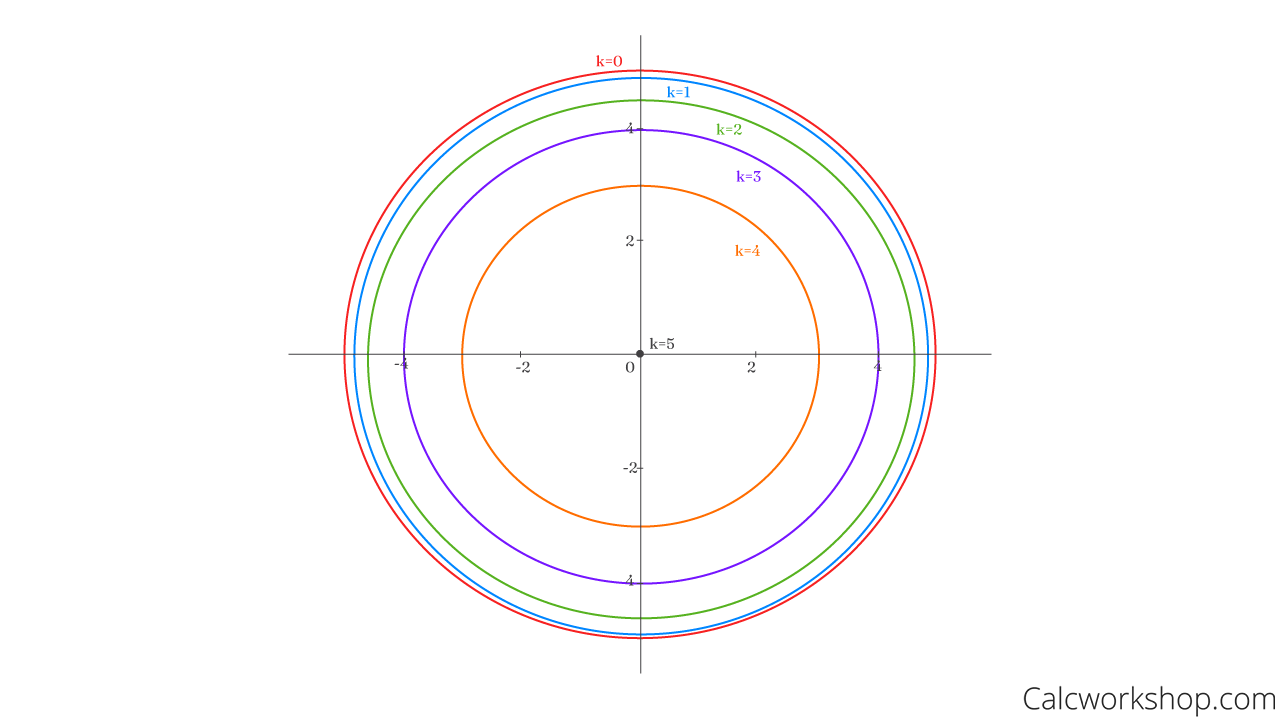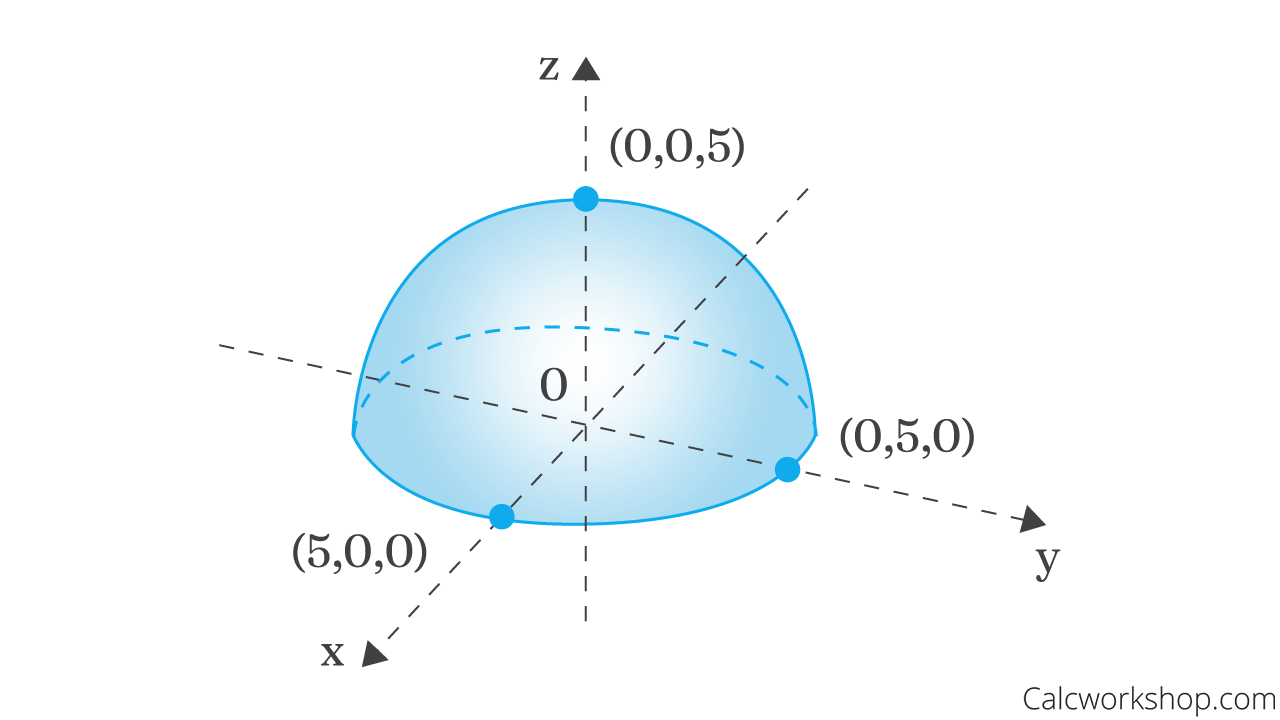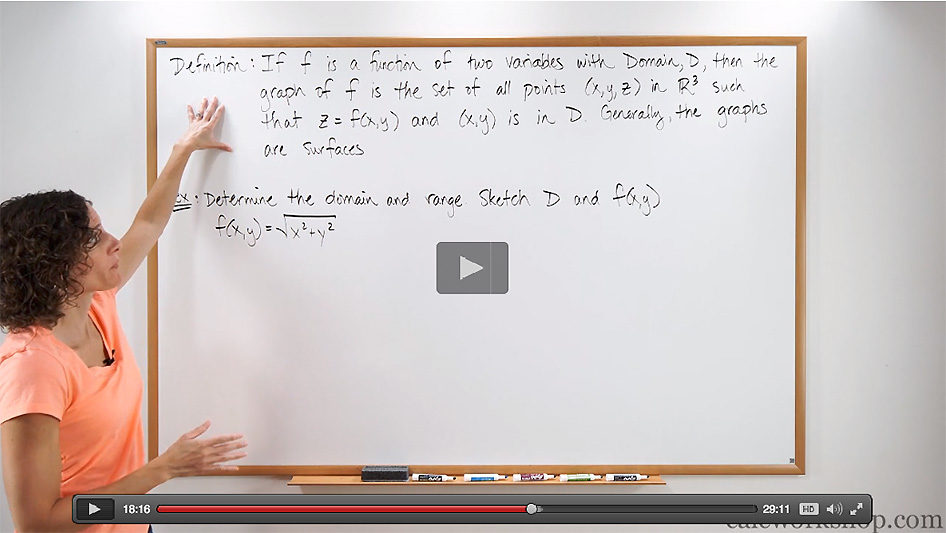Did you know that many mathematical models involve functions of several variables?

Jenn, Founder Calcworkshop®, 15+ Years Experience (Licensed & Certified Teacher)
It’s true.
For example…
- The ability to represent points on the surface of the earth.
- Finding the work done by a force acting on an object.
- Calculating the profit made from selling various items.
- Or even finding the volume of a rectangular solid (i.e., V=lwh) all involve functions of two or more variables.
Domain And Range Of Multivariable Functions
So, a function
And for convenience we say
But don’t worry.
Functions of several variables are just like functions of single variables.
Example #1 – Evaluate
For instance, suppose
Well, all we have to do to determine the value of
When
And when
Therefore, we have found two ordered triples.
- If
- If
But this now leads us to ask about “all” points
In other words, if
is the value of the function at , then the domain consists of all points for which the formula makes sense and yields a valid or truthful result. And the range of the function is the set of its values for all in its domain.
So, to determine the domain and range of a function of two variables or more, we simply need to determine where the function is defined.
Example #2 – Find The Domain & Range
For example, let’s find the domain and range of the following functions:
Problem #1:
Since
is an exponential function, it is defined everywhere. Therefore, no matter what values we substitute for and , we will have a defined value. So, the domain of is . Moreover, because we know that
has a horizontal asymptote at , and is only defined for when the range of is
Problem #2:
Okay, so
is a logarithmic function. And we know that has a vertical asymptote at and is defined when . Therefore, is defined when . So, the domain of is . And because
is a logarithmic function, the range is any real number. Thus, the range is .
Knowing how to describe functions of several variables by their domain and range is an important skill we will practice throughout our video lesson.
Level Curves
But sometimes, it is easier to understand a function’s behavior if we can visualize it.
So, now it’s time to consider the graph of a function of several variables.
If
It may be helpful to think of it this way.
Imagine the graph of the surface,

Surface Projected Domain
And the easiest way to create such a graph is by utilizing the method of level curves, sometimes called contour curves.
The level curves of a function
But here’s what is important to note!
The level curves
are nothing more than the traces of the graph of in the horizontal plane projected down onto the xy-plane.
Example #1 – Sketch The Graph
For instance, suppose we are asked to sketch the graph
First, we let
Next, we will simplify our equation by squaring both sides to obtain a more recognizable function.
Now, some of you may instantly recognize the function is the top half of a sphere (i.e., hemisphere) where
But for the rest of us, we still might need a bit more help.
Example #2 – Project Our Surface Onto The XY-Plane
Not to fear!
We simply create level curves to help us make sense of our surface.
Let
Now, we have a circle, and if we plug in values for

Sketching Level Curves
See, all we have to do is create a discrete set of height values by letting
And lastly, we simply must visualize these level curves “lifted up” to form the surface in three-dimensional space.

Level Curves 3D Surface
Together we will study the functions of several variables and explore how independent and dependent variables impact a function’s domain and range. And we will learn how graph level curves and surfaces for functions of two variables or more.
Let’s jump right in.
Video Tutorial w/ Full Lesson & Detailed Examples (Video)

Get access to all the courses and over 450 HD videos with your subscription
Monthly and Yearly Plans Available
Still wondering if CalcWorkshop is right for you?
Take a Tour and find out how a membership can take the struggle out of learning math.